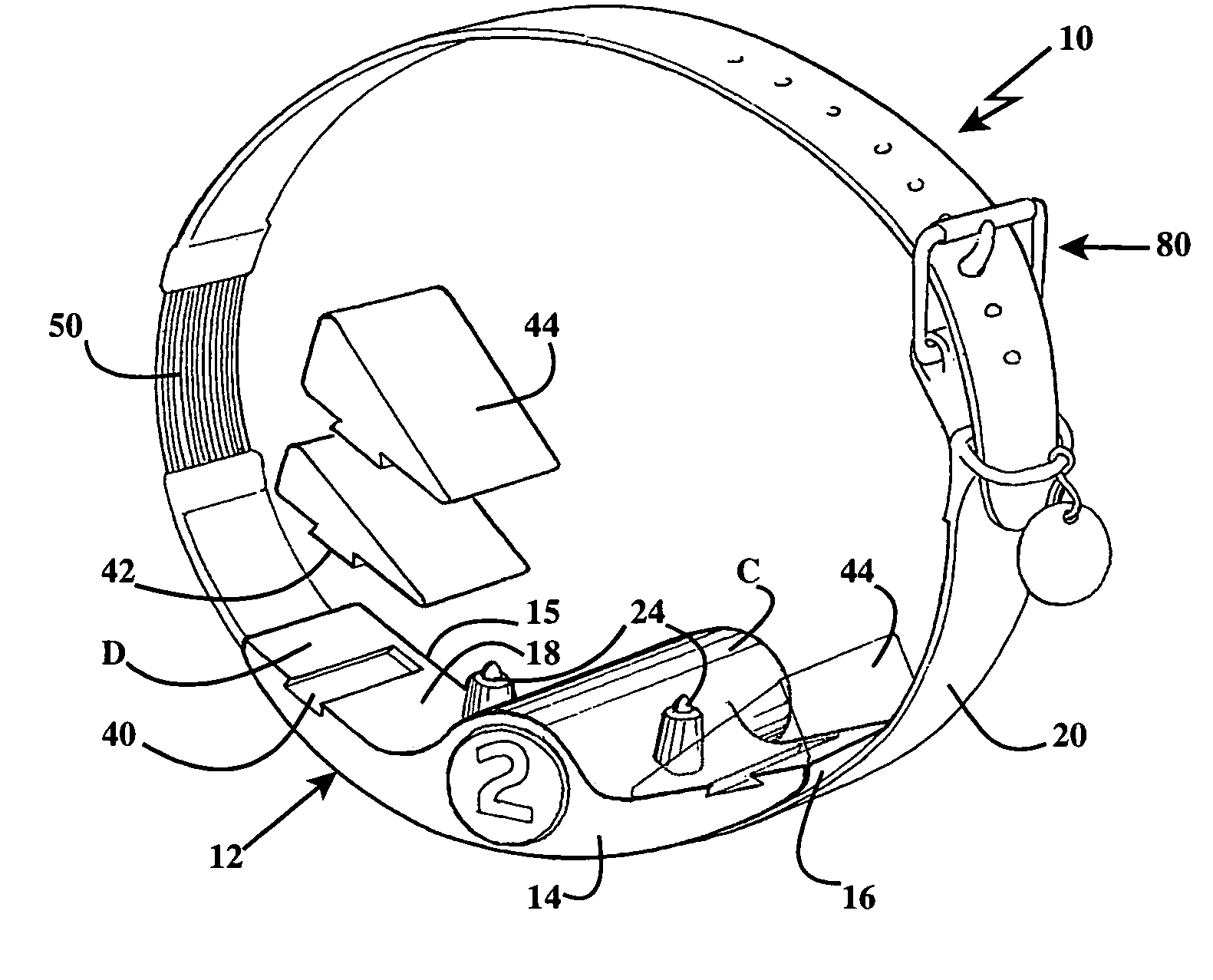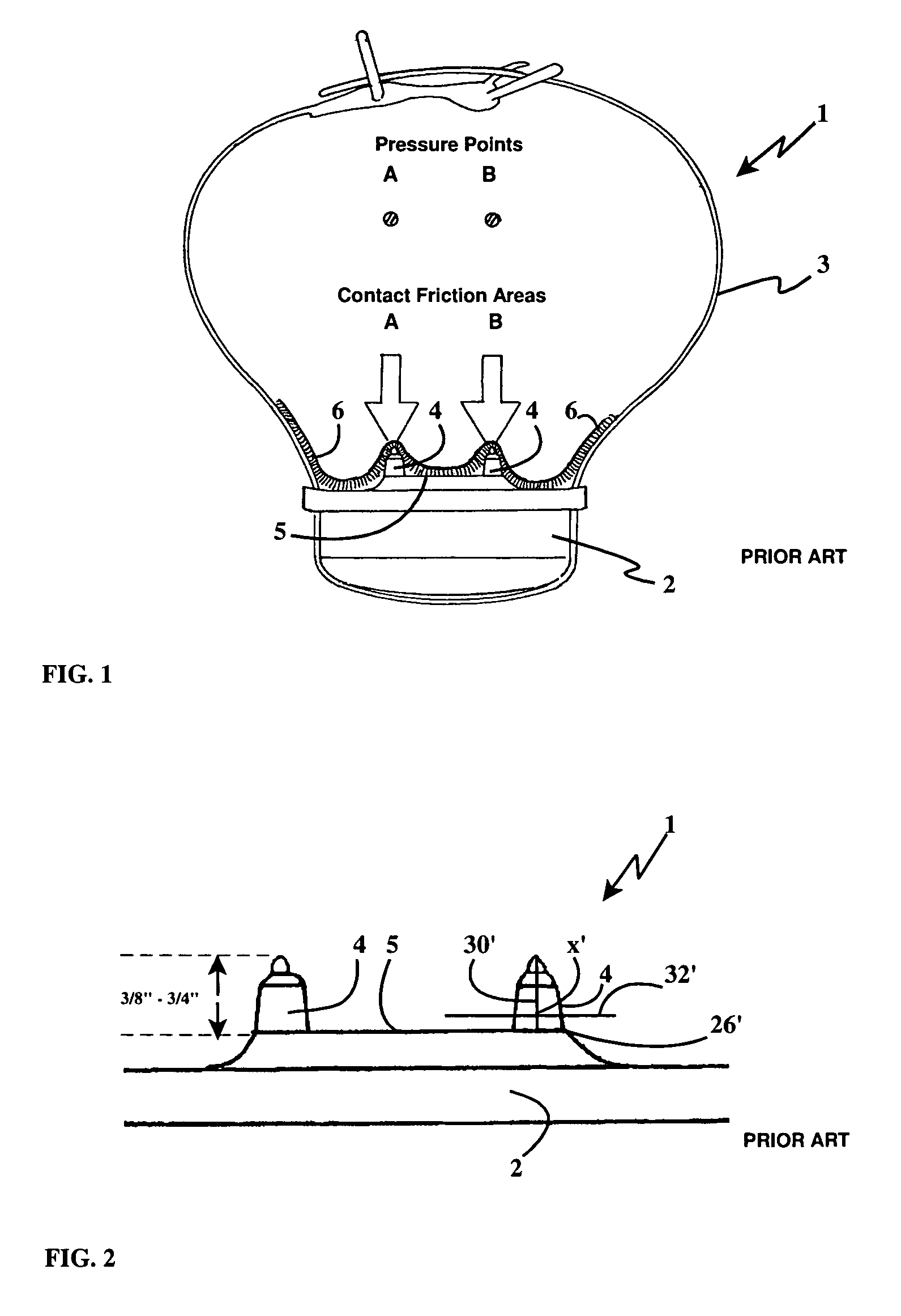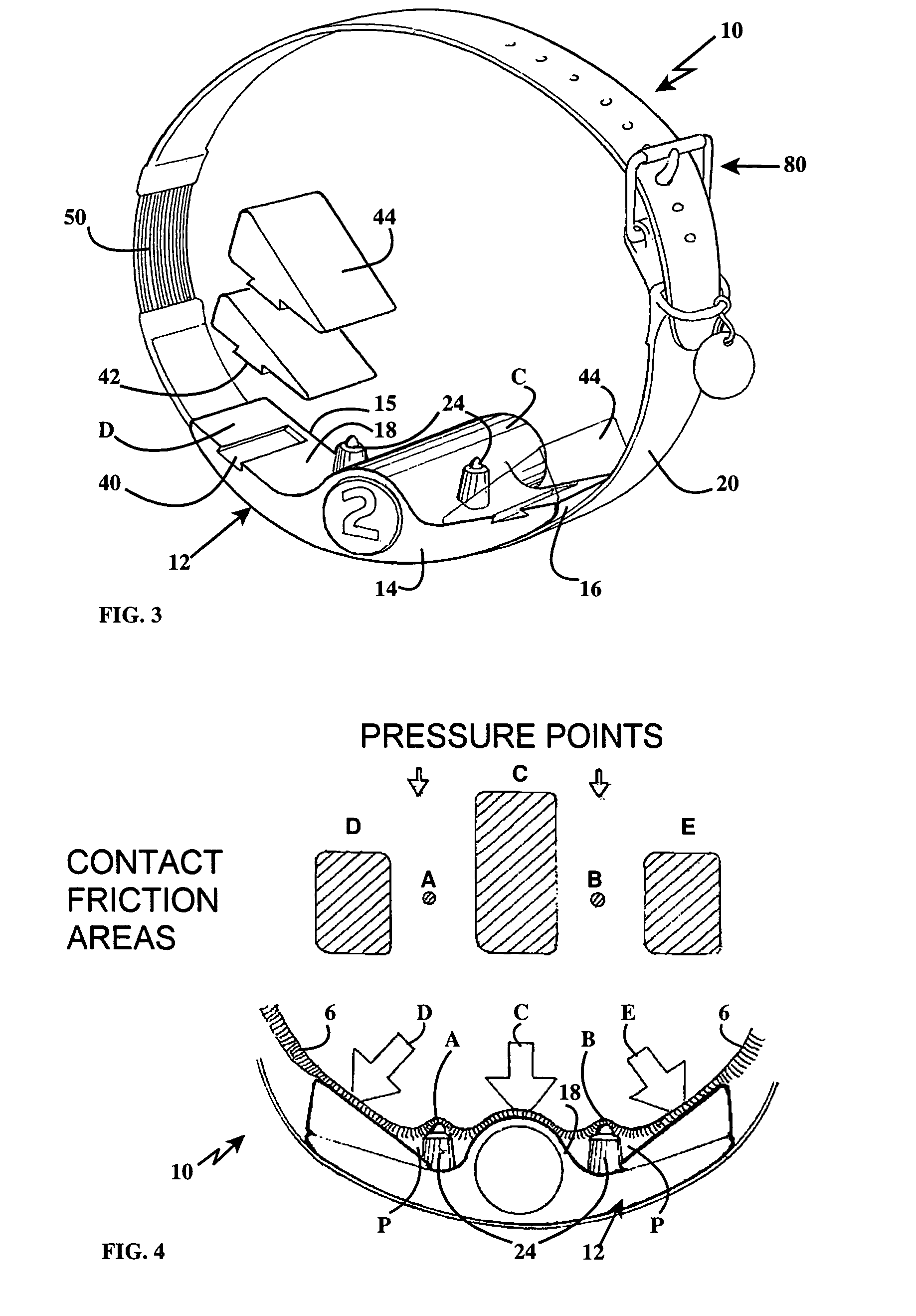Animal collar
a collar and animal technology, applied in the field of animal collars, can solve the problems of inexperienced trainers, limited effectiveness, and inability to properly tighten the collar, so as to reduce the risk of discomfort or damage to the skin of the animal, reduce the tensioning load applied, and reduce the risk of skin irritation or damage. , the effect of good electrode/skin conta
- Summary
- Abstract
- Description
- Claims
- Application Information
AI Technical Summary
Benefits of technology
Problems solved by technology
Method used
Image
Examples
Embodiment Construction
[0036]FIG. 1 shows an electronic animal collar 1 common to the prior art and designed for attachment to the neck of an animal, such as a dog. Collar 1 typically has a boxlike collar housing 2 attachable by a connecting strap 3 to the neck of an animal, and supporting one or more electrodes or sensors 4 on a flat inside surface 5 thereof. Electrodes 4 make contact with the skin 6 of the animal at pressure points A and B when the collar I is attached to the animal's neck. Pressure points A and B also represent contact friction areas between the animal's skin 6 and collar housing 2. The boxlike collar housing 2 contains the necessary electronic components for the proper functioning of the collar, including for example, a receiving unit for receiving electronic control signals, such as RF signals, from a remote transmitter, a power supply, and a stimulating unit for generating an electric stimulus, which is delivered to the animal through electrodes 4 in response to the received electro...
PUM
 Login to View More
Login to View More Abstract
Description
Claims
Application Information
 Login to View More
Login to View More - R&D
- Intellectual Property
- Life Sciences
- Materials
- Tech Scout
- Unparalleled Data Quality
- Higher Quality Content
- 60% Fewer Hallucinations
Browse by: Latest US Patents, China's latest patents, Technical Efficacy Thesaurus, Application Domain, Technology Topic, Popular Technical Reports.
© 2025 PatSnap. All rights reserved.Legal|Privacy policy|Modern Slavery Act Transparency Statement|Sitemap|About US| Contact US: help@patsnap.com



